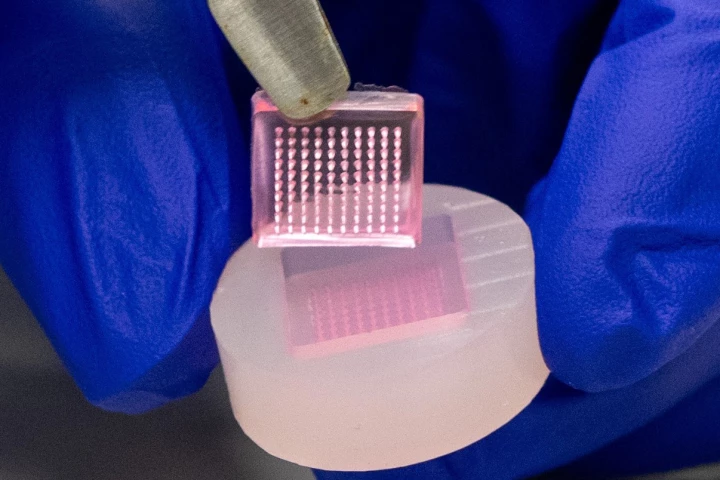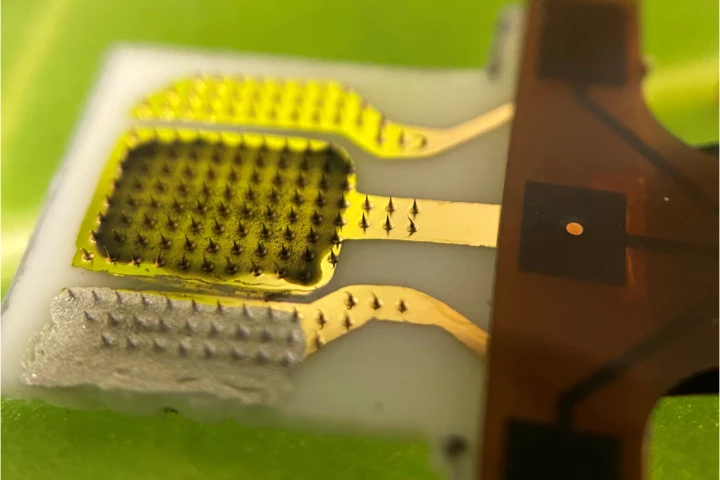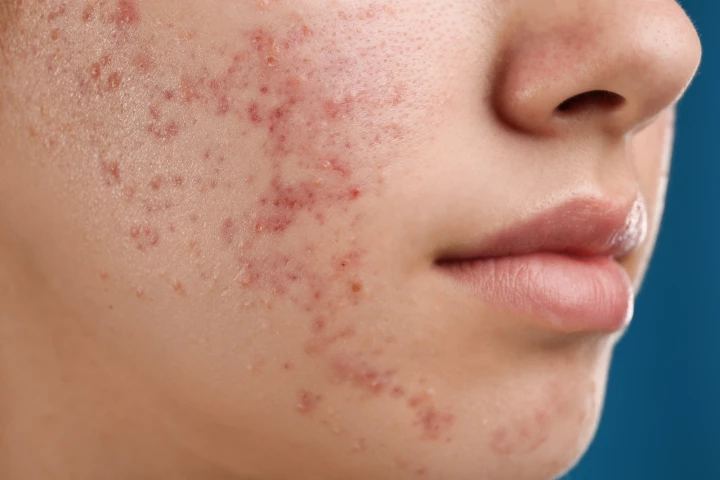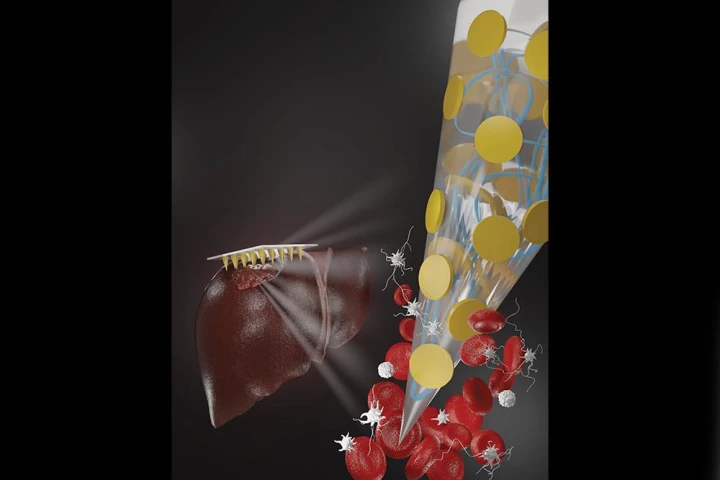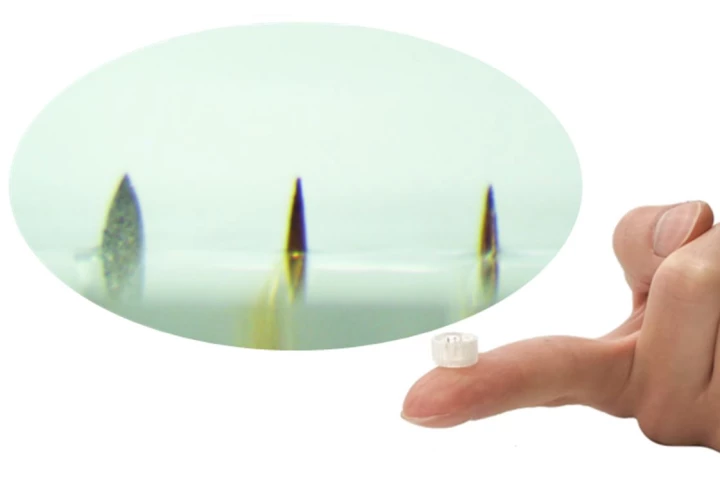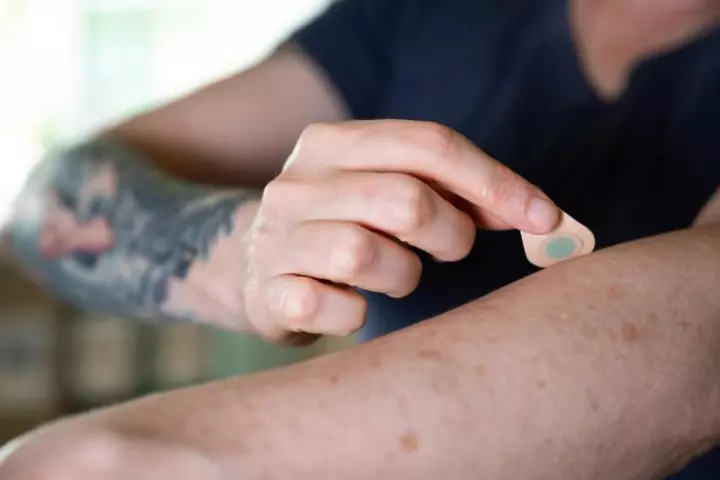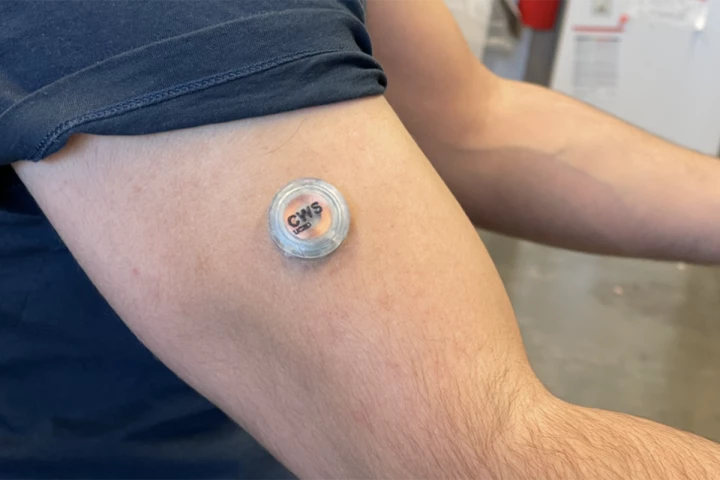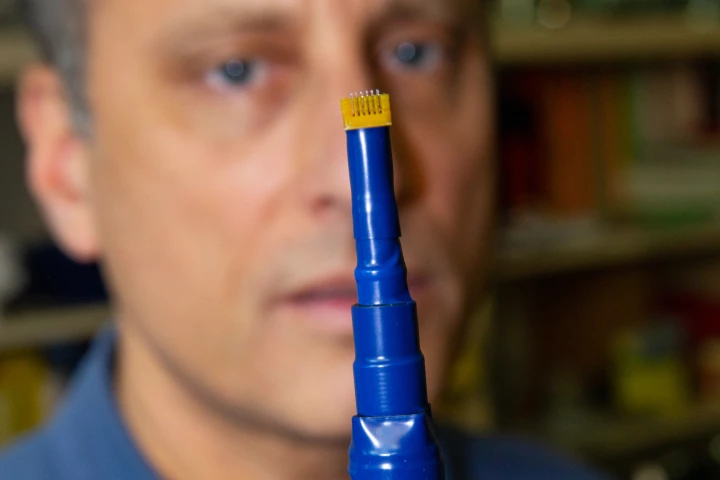Microneedles
-
Researchers at the National University of Singapore have hit upon new technologies to deliver a double whammy to chronic wounds in diabetics, using tiny needles barely visible to the human eye.
-
The sooner a farmer knows that their crops are suffering, the faster they can take action to prevent major crop failure. A new plant-leaf-poking sensor could soon help them do so, by sending an alert as soon as the plant gets stressed.
-
Scientists at Harvard have developed a promising new treatment to reverse hair loss associated with alopecia. Painless microneedle patches loaded with an immune regulating drug regrew hair in mice with alopecia within a few weeks.
-
Nobody likes having to get needles on a frequent basis, or even having to take multiple medications orally throughout the day. A wearable patch could help, by painlessly administering different drugs through the skin when triggered by a smartphone.
-
While it's important for your dog or cat to have a form of ID in case they get lost, tags can fall off, and microchips can migrate out of place. Japanese scientists are developing an alternative, in the form of quick and painless tattoos.
-
A novel microneedle patch may bring new hope to people who struggle to keep their acne under control. Instead of utilizing antibiotics, the device releases nanoparticles that kill acne-causing bacteria when triggered by exposure to ultrasound.
-
Skin-applied microneedle patches are already used to painlessly deliver medication and detect chemicals in a patient's bloodstream. A new one, however, reportedly stops wounds from bleeding much more effectively than traditional bandages.
-
There are many drugs which are very helpful in the right dosage, but quite harmful in larger amounts. A new microneedle patch is designed to help in that regard, by showing exactly how much medication is currently present in a patient's bloodstream.
-
Scientists have developed a microneedle patch that can be self-administered and painlessly deposit a tattoo onto skin in minutes. The technology is proposed for simple medical or animal uses but cosmetic uses are possible in the future.
-
While we've already seen skin-worn patches that can detect individual substances in the bloodstream, a new one goes considerably further. It simultaneously measures glucose, alcohol and lactate, and could have multiple applications.
-
Peanut allergies can be very serious, potentially resulting in life-threatening anaphylaxis. There could be new hope for eliminating such allergies, however, thanks to the use of peanut-packin' microneedles.
-
Although electroporation technology is very effective at delivering DNA-based vaccines, the required equipment is bulky, complex and expensive. Now, however, scientists have shown that a converted barbecue lighter is capable of doing the job.
Load More
